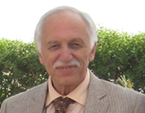Fundamentals of Thermal Vacuum Testing Science
This course is Part 1 of 2, with the next course “Application of Thermal Vacuum Testing”. It is recommended, but not required, for students to take both courses, dependent on individual experience and learning needs.
Overview
Thermal vacuum (TV) testing is an essential component of spacecraft testing, helping to ensure launch survivability, improve satellite reliability, and establish a path to flight heritage. This is the 1st class on fundamentals of thermal vacuum testing. This course seeks to provide an in-depth understanding of the fundamentals, goals and requirements of thermal vacuum testing for launch vehicles, satellites and satellite components, as well as establishing an educational foundation of the science involved in conducting thermal vacuum testing. By making the underlying science understandable, this course will allow lab managers, engineers, technicians, and mission planners to better understand test requirements and determine the best methods to implement thermal vacuum testing.
The course will first provide a short refresher of the physics and fundamentals of thermo-vacuum testing. Then, after an overview of typical satellite test requirements, the course will move into a comprehensive review of physics behind vacuum bake-out, thermal vacuum cycling, and thermal vacuum balance testing.
A detailed framework of the vacuum science needed to understand thermal vacuum testing will be taught in a separate class “Application of Thermal Vacuum Testing,” which will review vacuum and analysis hardware with a goal of allowing course-takers to identify the test platform needed to achieve both specific program requirements and overall mission success.
Learning Objectives
- Understand TV testing requirements, goals, and results
- Understand the various types of TV tests
- Understand the physics of heat transfer in a vacuum
- Understand thermal control methods
- Understand thermal models and TV test protocols
- See detailed Outline below
Type of Course: Instructor-Led Short Course
Course Length: 1 day
AIAA CEU's available: Yes
1. Introduction to testing requirements and goals
1.1. The TV test goals
1.1.1. Verify performance of s/c components
1.1.2. Verify performance of s/c thermal system
1.1.3. Verify and calibrate s/c thermal model
1.2. Type of tests:
1.2.1. System
1.2.2. Survivability
1.2.3. Functioning
1.2.4. Unit
2. TV test results:
2.1. Verification of s/c performance
2.2. Verification of a thermal model
2.3. Functional Testing
2.4. Electro-magnetic/EMI Testing
2.5. Vibration/Shock Testing
2.6. Thermal Testing
2.6.1. Thermal Bakeout Testing
2.6.2. Thermal Cycle Testing
2.6.3. Thermal Vacuum Cycle Testing
2.6.4. Thermal Vacuum Balance Testing
3. Basic of heat transfer in vacuum
3.1. Conduction
3.2. Radiation
3.3. Optical properties
4. Thermal control methods
4.1. Heater control methods
4.2. Mounting and thermal interface
4.3. Radiative thermal control
4.4. Temperature sensors
4.5. Thermocouples/RTDs
4.6. Calibration of temperature channels A/D and D/A conversion
5. Purpose of a thermal model
5.1. Development
5.2. Aging
6. Use of thermal model to develop TV test protocol
6.1. Modification of the model – mounting interface
6.2. Energy sources and sinks
6.3. Expose s/c
6.4. To conditions close to flight and exceed it
6.5. Placement of Temperature sensors
6.6. s/c orientation in the chamber – heat pipes, propellant tanks, loop heat pipe

Dr. Boris Yendler, CEO & Principal Consultant, YSPMM LLCDr. Boris Yendler is an expert in thermal terrestrial and space applications. He has 30+ years of experience as a thermal engineer, developing methods for thermal management of different systems including spacecraft platforms. He is CEO and founder of YSPM, LLC, a consulting engineering company that provides engineering services to satellite operators and manufactures including propellant gauging, thermal and propulsion systems support, etc. Currently, Dr. Yendler is working on several space missions, including SmallAat Lunar IceCube (Morehead university and NASA), landing BereSheet (Israel) spacecraft on Moon surface, GEO communication SmallSat (Astranis), reliability of individual flying vehicle (Armada E), etc.
Dr. Yendler has taught courses at different universities and military installations, including but not limited to Purdue University, Morehead University, Tokyo Institute of Technology, Wright-Patterson Air Force base, etc. He previously worked as a thermal engineer at Lockheed Martin Corp. (LM) for almost 20 years.AIAA Training Links
For information, group discounts,
and private course pricing, contact:
Lisa Le, Education Specialist (lisal@aiaa.org)
